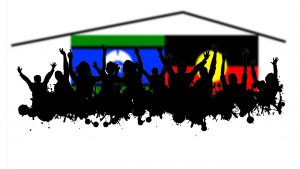 September 15, 2015
September 15, 2015
Aboriginal children who are removed from their immediate family should, wherever possible, live with their extended family or other Aboriginal families of the same clan.
A short review of the literature about residential care for Aboriginal children and young people was released in August and here are some of the conclusions.
In Australia and elsewhere, the number of Aboriginal children as a percentage of the population in the child protection system has for some time exceeded the capacity of the Aboriginal population to provide relative and kinship care (Bromfield, Osborn 2007).
There is a growing number of Aboriginal children living in residential care. There are very few residential care models specifically developed for Aboriginal children (Flynn et al 2005; Bath 2008, Bamblett et al 2014).
One of the strengths of Aboriginal culture is that connection to the family occurs in a community context that has a broad definition of family. Care of children is usually shared among several adults. This allows for attachment between child and carers to include a wide range of family members and family connections (Bamblett 2014; Iannos 2013; Price Robertson & McDonald 2011; SNAICC 2014; Brend et al 2013). This is beneficial to providing stability for children in residential care.
However, overcoming historical distrust and trauma associated with past welfare practices (the Stolen Generation) is a significant obstacle for child welfare agencies in engaging the community in supporting placements in out of home care (Higgins et al 2005).
The Australian Aboriginal culture is not homogenous and there are variations among clans and between urban and remote communities which complicate providing culturally appropriate residential services when the children are very likely to come from outside the immediate region. There are also the ‘standard’ practice challenges in residential care of meeting the therapeutic needs of each child, getting the right ‘mix’ of children, maintaining safe family connections, timely assessments and, importantly, ensuring children are engaged in the decisions about them.
Regardless, it is imperative for the security and wellbeing of Aboriginal children that their identity and belonging to their Aboriginal community is strongly supported. There are very few examples of service models that have been evaluated but the literature does provide some common elements for success. These include:
- Integrated connection with culture and extended family for the facility and the child.
- Qualified staff with demonstrated skills, knowledge and understanding of working across cultures, of historical practices and their adverse impact, and the significance of cultural knowledge to Aboriginal children.
- Staff who celebrate and integrate cultural practices into their daily interaction and build relationships with children which are steeped in deepening the connection to the child’s community, language and customs.
- Structured cultural programs, outside of the residence, which promote connection and identity.
- Support for transition from residential care to the child’s community and family, wherever possible.
The literature review is published on this website as Literature Review – Residential Care for Aboriginal Children and Young People
If you’d like to comment on this, please join the discussion in the panel below.
References
Bamblett, M., Long, M.,Frederico, M.,& Salamone, C. 2014 ‘Building an Aboriginal Cultural Model of Therapeutic Residential Care: The Experience of the Victorian Aboriginal Child Care Agency’ Children Australia 39 (4) 206 -210
Bath, H., 2008 ‘Residential care in Australia, Part 1. Service Trends, the young people in care, and needs based responses. Part 2. A review of recent literature and emerging themes to inform service development’ Children Australia, 33 (2)
Brend, D., Fletcher, K., & Nutton, J. 2013 ‘With Laura: Attachment and the Healing Potential of Substute Caregivers within Cross-cultural Child Welfare Practice’ First Peoples Child and Family Review; 7, 2, pp 43 -59.
Bromfield, L.M.,& Osborne, A., 2007 Kinship Care. Research Brief, no. 10 Melbourne: Australian Institute of Family studies, National Child Protection Clearing House
Flynn, C., Ludowici, S., Scott, E.,& Spence, N., 2005 Residential care in NSW, OOHC development Report. Association of Children’s Welfare Agencies. NSW
Higgins, D.J., Bromfield L.M.,& Richardson, N, 2005 Enhancing out-of-home care for Aboriginal and Torres Strait Islander young people. Melbourne: Australian Institute of Family studies, National Child Protection Clearing House.
Iannos, M., McLean, S., McDougall, S.,Arney, F., 2013 ‘Maintaining connectedness: Family contact for children in statutory residential care in South Australia’. Communities, Children and Families Australia, 7, 1
Price-Robertson, R.,& McDonald, M., 2011 Working with Indigenous children, families and communities – Lessons from Practice. CAFCA practice sheet, Communities and Families Clearinghouse Australia
SNAICC, 2014 Family Matters – Kids safe in culture, not in care. South Australia Issues Paper
